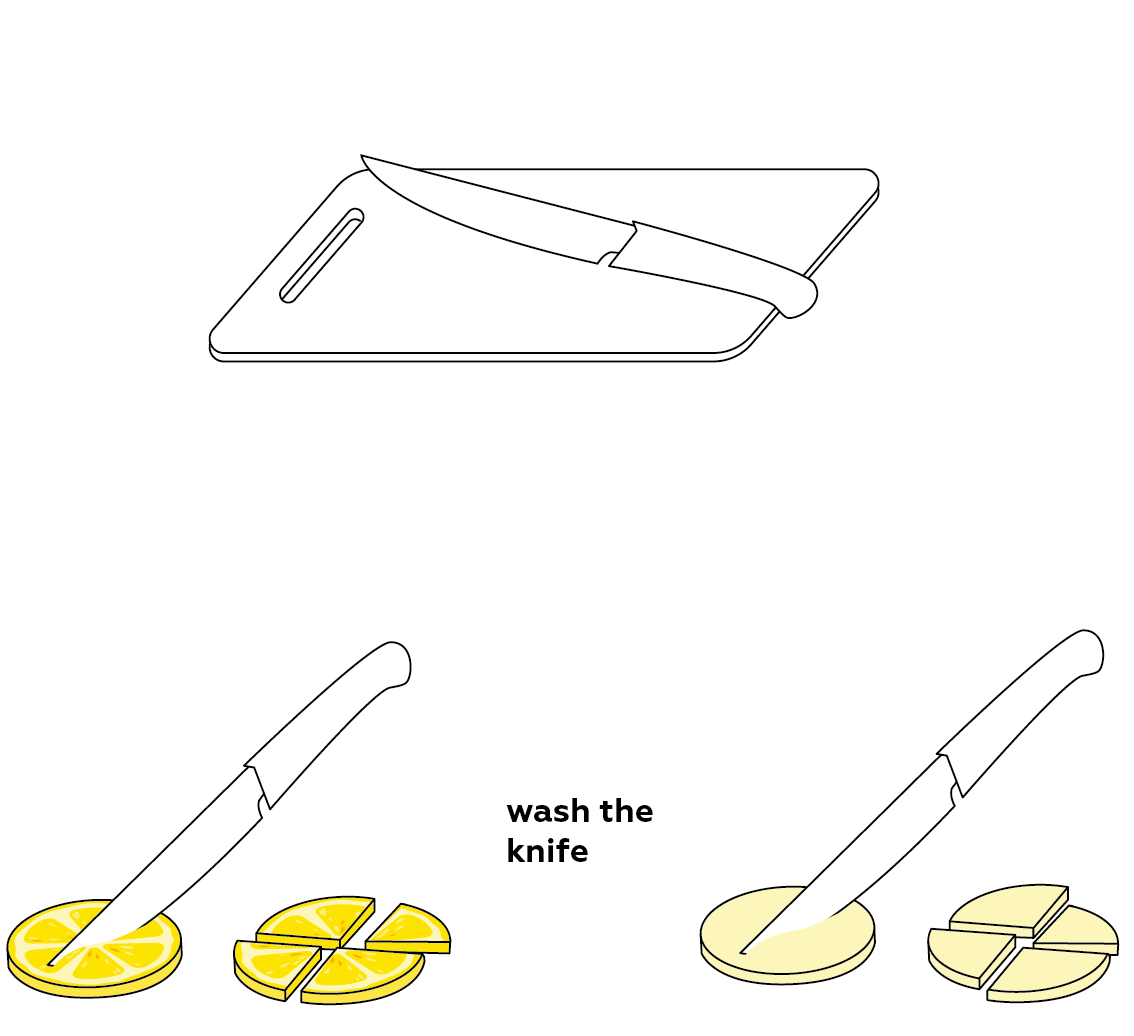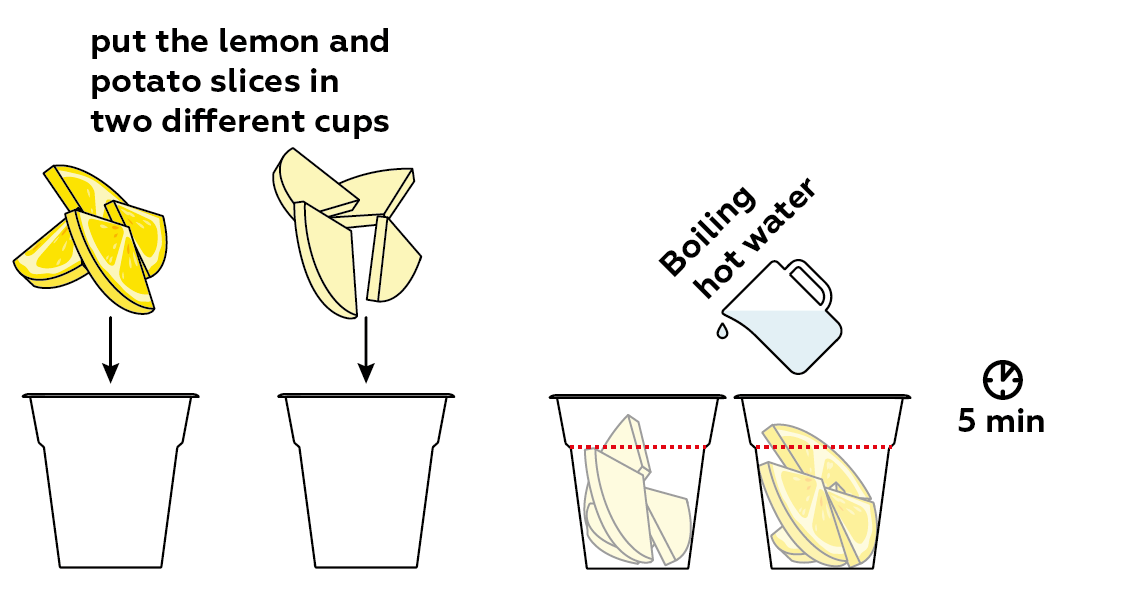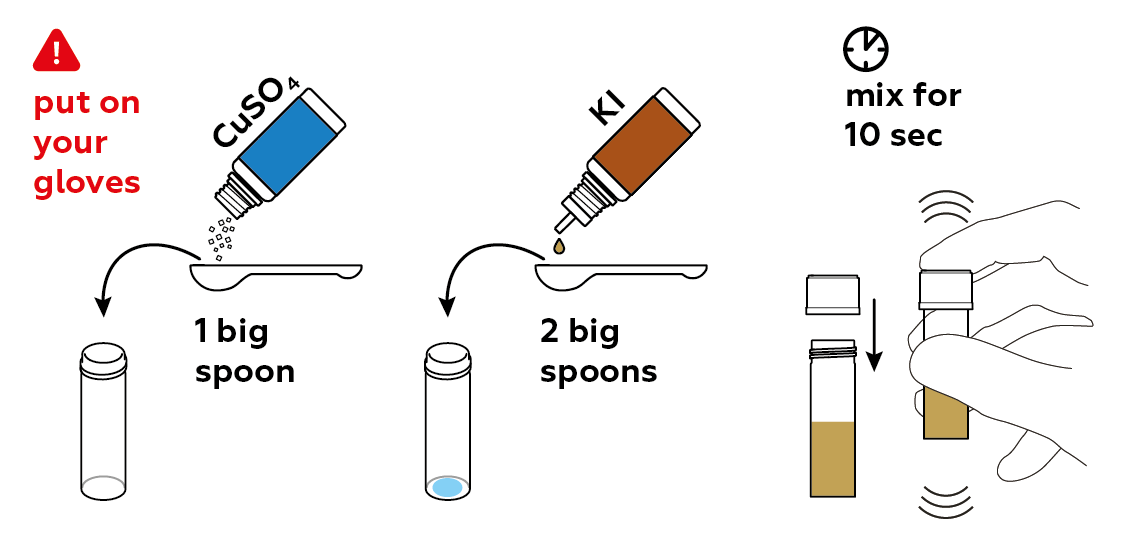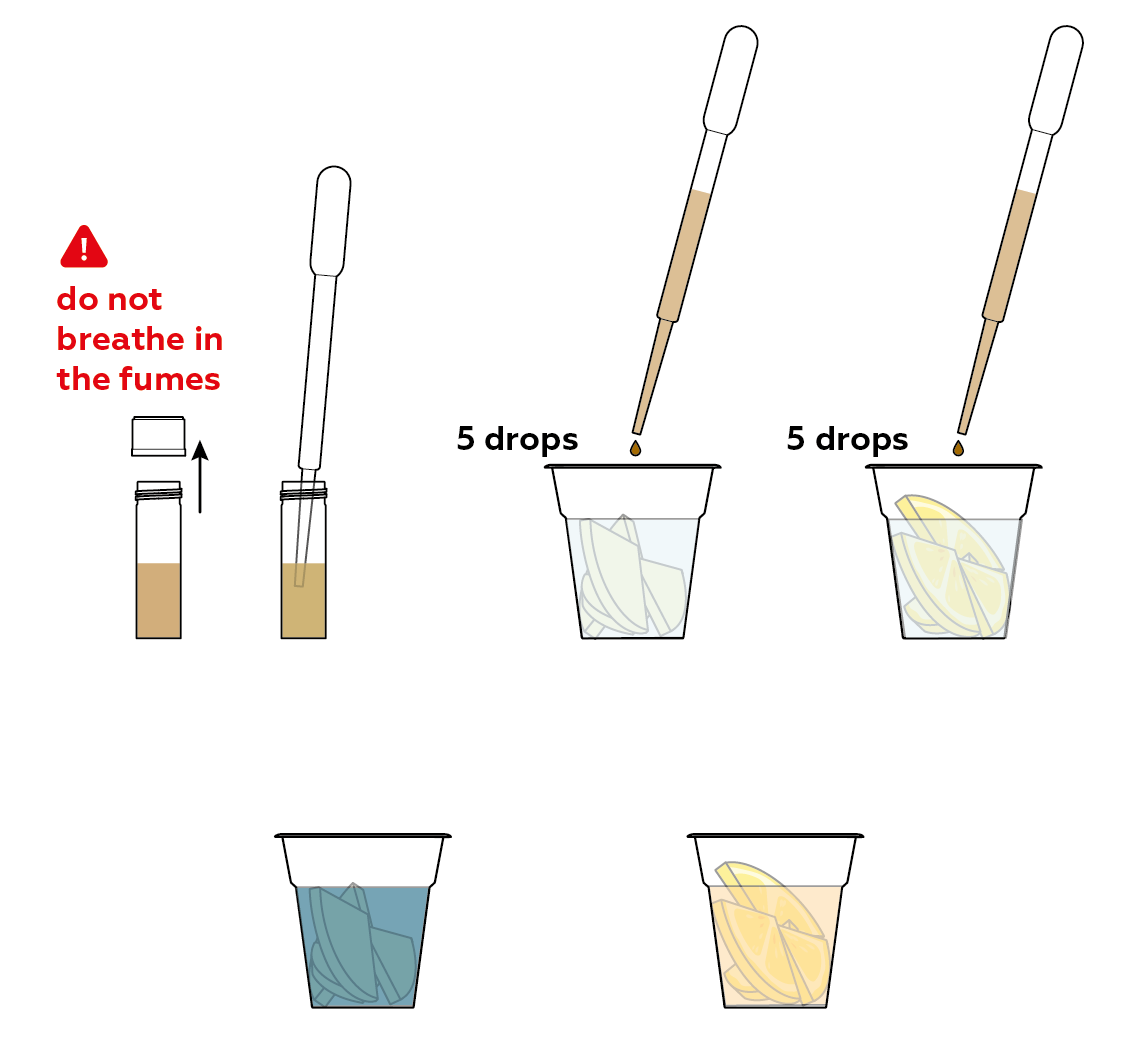Is this food starchy?
Detect starch in plants!
Reagents
Safety
- Put on protective eyewear. Put protective gloves on before step 3.
- Conduct the experiment on the plastic tray and in a well-ventilated area.
- Avoid inhaling iodine vapors from the vial.
- Observe safety precautions when working with boiling water.
- Do not allow chemicals to come into contact with the eyes or mouth.
- Keep young children, animals and those not wearing eye protection away from the experimental area.
- Store this experimental set out of reach of children under 12 years of age.
- Clean all equipment after use.
- Make sure that all containers are fully closed and properly stored after use.
- Ensure that all empty containers are disposed of properly.
- Do not use any equipment which has not been supplied with the set or recommended in the instructions for use.
- Do not replace foodstuffs in original container. Dispose of immediately.
- In case of eye contact: Wash out eye with plenty of water, holding eye open if necessary. Seek immediate medical advice.
- If swallowed: Wash out mouth with water, drink some fresh water. Do not induce vomiting. Seek immediate medical advice.
- In case of inhalation: Remove person to fresh air.
- In case of skin contact and burns: Wash affected area with plenty of water for at least 10 minutes.
- In case of doubt, seek medical advice without delay. Take the chemical and its container with you.
- In case of injury always seek medical advice.
- The incorrect use of chemicals can cause injury and damage to health. Only carry out those experiments which are listed in the instructions.
- This experimental set is for use only by children over 12 years.
- Because children’s abilities vary so much, even within age groups, supervising adults should exercise discretion as to which experiments are suitable and safe for them. The instructions should enable supervisors to assess any experiment to establish its suitability for a particular child.
- The supervising adult should discuss the warnings and safety information with the child or children before commencing the experiments. Particular attention should be paid to the safe handling of acids, alkalis and flammable liquids.
- The area surrounding the experiment should be kept clear of any obstructions and away from the storage of food. It should be well lit and ventilated and close to a water supply. A solid table with a heat resistant top should be provided
- Substances in non-reclosable packaging should be used up (completely) during the course of one experiment, i.e. after opening the package.
FAQ and troubleshooting
This can happen if you cut the potato before cutting the lemon. Particles of starch from the potatoes likely adhered to the lemon. The reaction between iodine and starch is very sensitive, and the telltale blue color appears even when both substances are present at low concentrations. We recommend repeating the experiment using another knife and cutting board. Be sure to slice the lemon first, rinse the knife, and then cut the potato. This should work!
Yes! You can try this experiment with any vegetable, fruit, or berry!
But remember, don't eat any of the foods you use in the experiment. Dispose of them with household garbage or compost.
Step-by-step instructions
Living organisms have different ways of storing nutritious compounds, such as sugars. A method used by plants is to "weave" glucose (a type of sugar) molecules into long chains in a special way. The resulting compound is known as starch, and it can be used by a plant to obtain glucose when needed. Our organisms can also use starch as a source of glucose, that's why starchy foods are very nutritious.

Put the wedges in hot water. This will allow some of the starch to leave the slices to be detected in the solution. Though, starch is white, so you won't be able to tell if it's present.

Luckily, iodine I2 has a property of turning dark-blue on contact with starch. Potassium iodide KI contains iodide ions I-, which we can turn into the iodine molecules I2 with the help of CuSO4.

Add a few drops of iodine I2 solution to your samples and you can immediately tell if starch is present.

Disposal
Dispose of solid waste together with household garbage. Pour solutions down the sink and wash with an excess of water.
That’s interesting!
Why aren’t potatoes sweet?
As you now know, potatoes contain starch, a substance that plants produce as a result of photosynthesis. Starch consists of huge molecules built of smaller fragments. Chemists call such large molecules "polymers," and the smaller fragments “monomers.” In starch, these monomers are molecules of a sugar called glucose. Thus, starch is basically a very long sugar molecule. This might lead you to conclude that potatoes should taste sweet – so why don’t they?The answer lies in starch’s polymeric structure. Our taste receptors only recognise "short" sugar molecules as sweet, so in order for a potato to taste sweet, its huge starch molecules must be chopped into smaller pieces. Our saliva can do this with the help of an enzyme known as α-amylase, which breaks the bonds between glucose monomers. But this process takes a long time – far longer than you need to chew and swallow the potato you’re consuming!